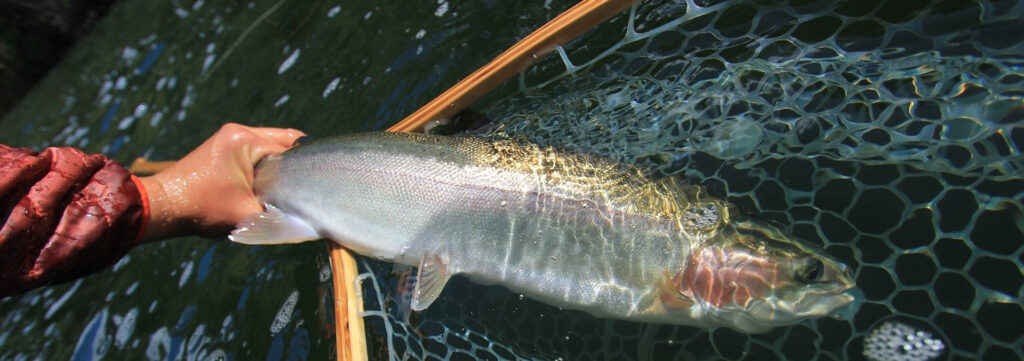As spring approcahes, it’s just about time to put away the ice fishing gear and start getting ready for the much-anticipated stillwater fly-fishing season. This can include servicing gas outboards; prepping your boat, fly rods and other equipment; organizing your tackle bag; filling gaps in your fly boxes; and stocking up on strike indicators as well as spools of leader and tippet. Brian Chan covers the tackle box essentials in this short video:
Timing is Everything
It’s for good reason that the ice-off period gets a lot of attention among fly-fishing enthusiasts, who are itching to wet a line after an often interminable winter. Some of the best fly-fishing of the entire stillwater season can happen as the ice comes off, and immediately after. But timing is everything: this extremely fishy window often lasts only a week or two before the fishing slows as a lake’s spring turnover begins.
Although coastal lakes near sea level, and some large inland lakes, remain ice-free (or pretty close to that) year ’round, smaller lakes in the Interior can endure five months or more of ice cover. For these lakes, the ice can thaw as early as mid-March at lower elevations, but not until well into May at higher elevations. In any given year, the size of the lake, wind conditions, snowpack, and local weather can all affect the speed at which lakes become ice-free. You can find the elevation of each stocked lake listed on our Where to Fish map.
Fish the Shallow Water
Initially at ice off and prior to turnover, trout will generally be found in a cool, well-oxygenated layer of water near the surface of the lake – conditions which are favourable for trout. The remainder of the water column will have much lower oxygen levels due to a long winter of ice cover with little aeration from wind- or wave-action, along with decaying plant matter that consumes oxygen.
At ice off, fish are typically in shallow water less than three metres (10 feet) deep. Look for rising fish cruising near the surface. Try chironomid larvae, or bloodworm pattern variations in shades of red, maroon, or Kelly green, fished under a strike indicator with a floating fly-line. Imitations of other trout food staples like leeches, scuds, water boatmen, and small chironomid pupae are also good bets.
Spring Turnover
A couple weeks following ice off, and as surface water temperatures warm above near-freezing, a strong wind event will initiate a lake’s turnover. Oxygenated but nutrient-poor waters near the surface mix with deeper, low-oxygen yet nutrient-rich waters. If you notice large amounts of decaying plant matter, algae, and bottom debris floating on the surface of the lake, along with murkier than normal water, the turnover process is likely already underway. Spring turnover is the event that replenishes nutrients vital for photosynthesis, zooplankton production, and then insect and invertebrate production as food for trout.
Turnover can be a stressful time for trout, and fishing will slow down. All is not lost; after a week or two the water quality, clarity, and fishing will improve again. For the time being, you can try another lake at a different elevation that is not in turnover.
Author: Mike Gass, Freshwater Fisheries Society of BC
Photo Credit: Glenn Gerbrandt & Morgan Martin
